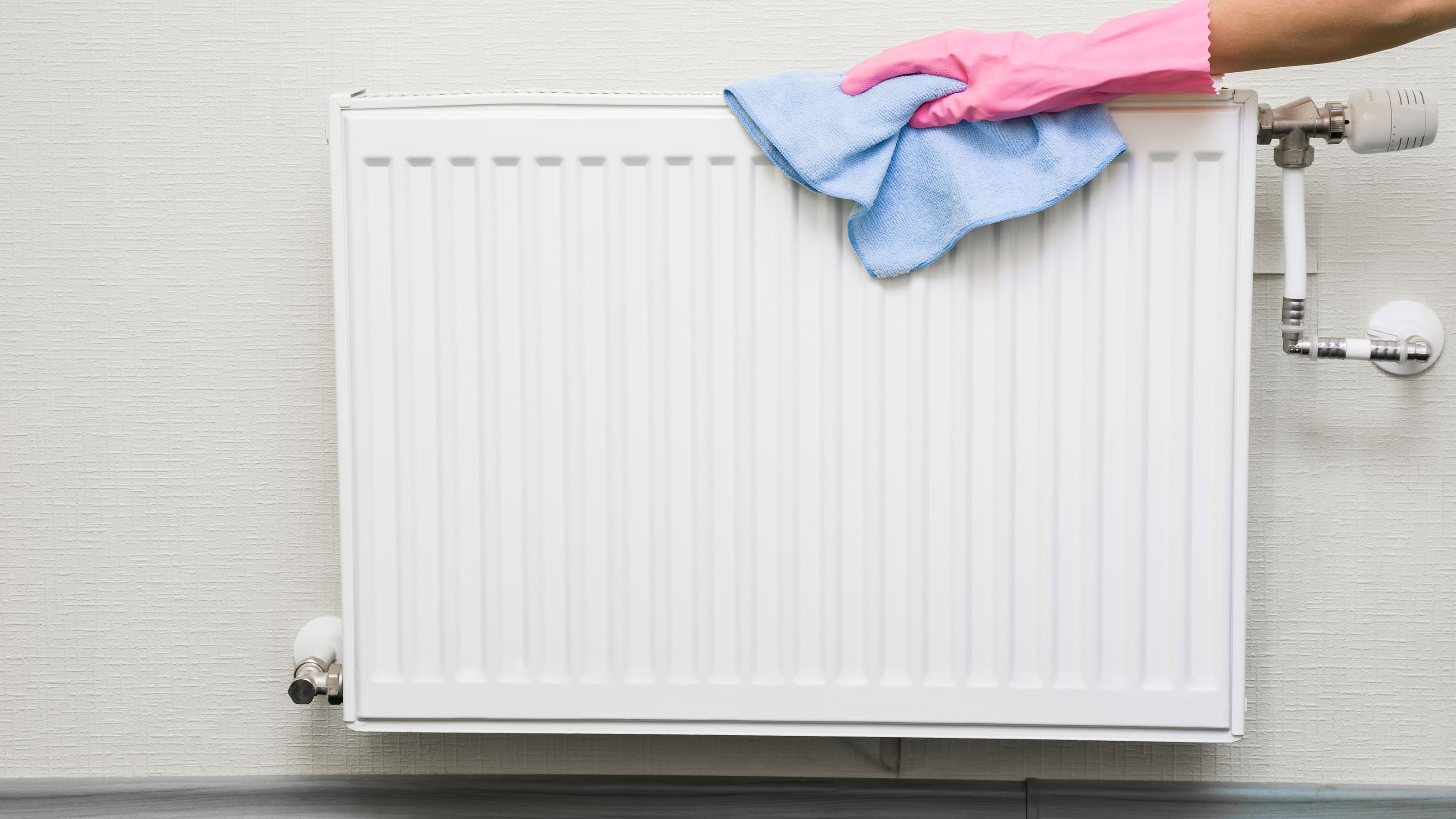How to clean a radiator – remove dust inside and out
Clean radiators easily using your hairdryer, the vacuum, scotch and more. Banish dust inside and out to keep them working efficiently.


Knowing how to clean a radiator ensures these features of your home are as free of dust and grime as its other surfaces. Cleaning radiators should be part of your regime because they tend to collect dust, which isn’t healthy for a home’s inhabitants. A covering of dust makes them work less efficiently, too.
It’s true that if you have different types of radiators in place to heat your home, they can pose a challenge when it comes to cleaning because of their design. It’s easy for dust and debris to make their way inside some designs, too, so you might be wondering just what is the right way to clean them thoroughly inside and out – without calling in a specialist.
We’ve got all the answers for you here along with expert tips on tools and techniques whatever the style of the radiators in your home.
How to clean a radiator
The first thing to know about cleaning a radiator is that both the inside and outside need attention. But it is possible to successfully remove dust and debris from them yourself.
Tools and materials
- Old towel or dust sheet
- Vacuum cleaner
- Yardstick or other long stick, or radiator cleaning brush, or special vacuum attachment
- Microfiber cloths
- Scotch
- Hairdryer
- Soapy water
- Soft cloth or sponge
1. Turn the radiator off
It’s important to turn off the radiator and let it cool down before you start cleaning. Note that if you’ve previously observed that the radiator has cold spots, it might be time to learn how to bleed a radiator.
‘Shutting them down makes them safer and prevents them from collecting dust as you clean,’ explains Luke Hamel of Hamel’s Air Conditioning & Heating, San Diego. Place a towel or dust sheet underneath the radiator to catch any dust, too.
2. Vacuum the radiator
To clean a radiator thoroughly, you'll need to make use of your vacuum. Vacuum around and underneath the radiator first.
Get small space home decor ideas, celeb inspiration, DIY tips and more, straight to your inbox!
Next, vacuum the top of the radiator removing the dust from here then move on to the sides and bottom of the radiator. ‘You need to ensure you are removing as much of the collected dust at possible from on/inside your radiator,’ says central heating expert Chris Harvey at Stelrad.
3. Clean between the radiator fins
When choosing a radiator for your home you may have opted for designs with fins. To clean radiator fins, first of all be aware that you need to work gently. ‘You should always take care when cleaning radiator fins as they are very delicate,’ says Nick Tandy, head engineer at Toasti.
If your radiator has a top grill, you will need to remove it to clean inside. ‘In general, the top grill is being held in place by the side panels,’ explains Edward Jones, founder and CEO of HomeCareHow. ‘You can unclip the side panels and then the grill with both of your hands. Place the grill in a safe place where it’s out of your child or pet’s reach.’
You may have a special vacuum cleaner tool that will allow you to remove dust from between the fins. Alternatively, you can buy a radiator cleaning brush. Something long, flexible like the Holikme radiator duster is a sound budget-friendly choice that's easy to manoeuvre. As a further alternative you can use a yardstick or other stick, and attach a microfiber cloth to it with Scotch.
Gently work the tool between each of the fins to push the dust and debris out of the radiator. Use the same method to clean behind the radiator.
4. Blow away remaining dust
You’re likely not quite finished with the inside as there’s often some dust left behind here and at the back. This is where a hairdryer comes in handy. With the towel or dust sheet still in place below the radiator, use the hairdryer on its more powerful setting and direct the air down the inside as well as the back of the radiator to blow away dust.
5. Wipe down the outside
To complete the cleaning process, take a bucket of warm soapy water and use it to damp (but not soak) a sponge or cloth. The cloth or sponge should be soft – never use abrasive materials on a radiator. Wipe down the outside of the radiator.
When you’ve finished, dry the exterior using a microfiber cloth.
You might also want to check around the radiator. ‘Give the surrounding area and boards an inspection and ensure no dust has built up on them,’ advises Luke Hamel. ‘Wipe them down as needed and pay attention to the walls as dirt and dust will stick to the wall.’

Sarah is a freelance journalist and editor writing for websites, national newspapers, and magazines. She’s spent most of her journalistic career specialising in homes – long enough to see fridges become smart, decorating fashions embrace both minimalism and maximalism, and interiors that blur the indoor/outdoor link become a must-have. She loves testing the latest home appliances, revealing the trends in furnishings and fittings for every room, and investigating the benefits, costs and practicalities of home improvement. It's no big surprise that she likes to put what she writes about into practice, and is a serial house revamper. For Realhomes.com, Sarah reviews coffee machines and vacuum cleaners, taking them through their paces at home to give us an honest, real life review and comparison of every model.